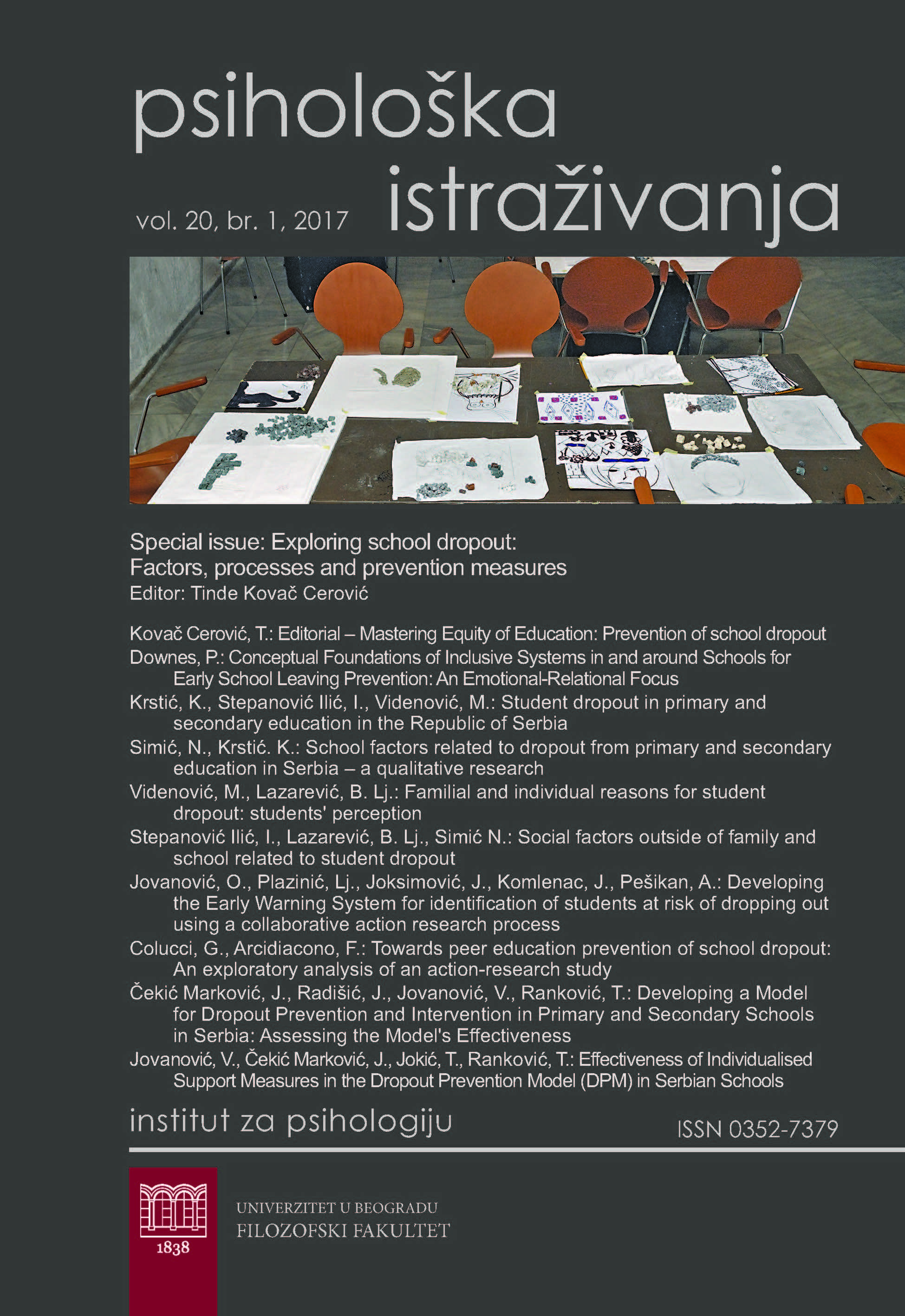School factors related to dropout from primary and secondary education in Serbia – a qualitative research
School factors related to dropout from primary and secondary education in Serbia – a qualitative research
Author(s): Nataša Simić, Ksenija KrstićSubject(s): Psychology, Educational Psychology
Published by: Филозофски факултет, Универзитет у Београду
Keywords: dropout; school factors; teacher-student relationship; learning support; qualitative analysis
Summary/Abstract: Dropping out of educational system is a serious individual, familial, educational and social problem. It is a complex process influenced by a large number of factors. Nevertheless, it is a phenomenon that takes place in school, and different school factors can serve as risk or protective factors. Dropout rates in Serbia are still high. One way to improve the educational system and ensure equal education for every child is to reduce dropout rates from primary and secondary education. As part of a larger study, the goal of this research was to investigate and identify key school factors related to dropout from primary and secondary schools in Serbia. The research was conducted in 8 primary and 13 secondary schools from 17 municipalities with high dropout rates. In order to hear voices from different actors in the educational system, qualitative research was conducted, involving interviews and focus groups with teachers, school principals, school psychologists, counsellors, pedagogical assistants, parents and students. Following the analysis, several school factors highly related to dropout were singled out. Low quality (individualisation) of teaching, lack of learning and emotional support and lack of positive teacher-student relationships proved to have the greatest influence on student dropout. On the other hand, our results indicate that student and parent participation in school life is underused as a resource for dropout prevention. These factors are described and their impact in Serbian context explained. The results are discussed in the light of similar findings from previous research.
Journal: Psihološka istraživanja
- Issue Year: 20/2017
- Issue No: 1
- Page Range: 51-70
- Page Count: 20
- Language: English

